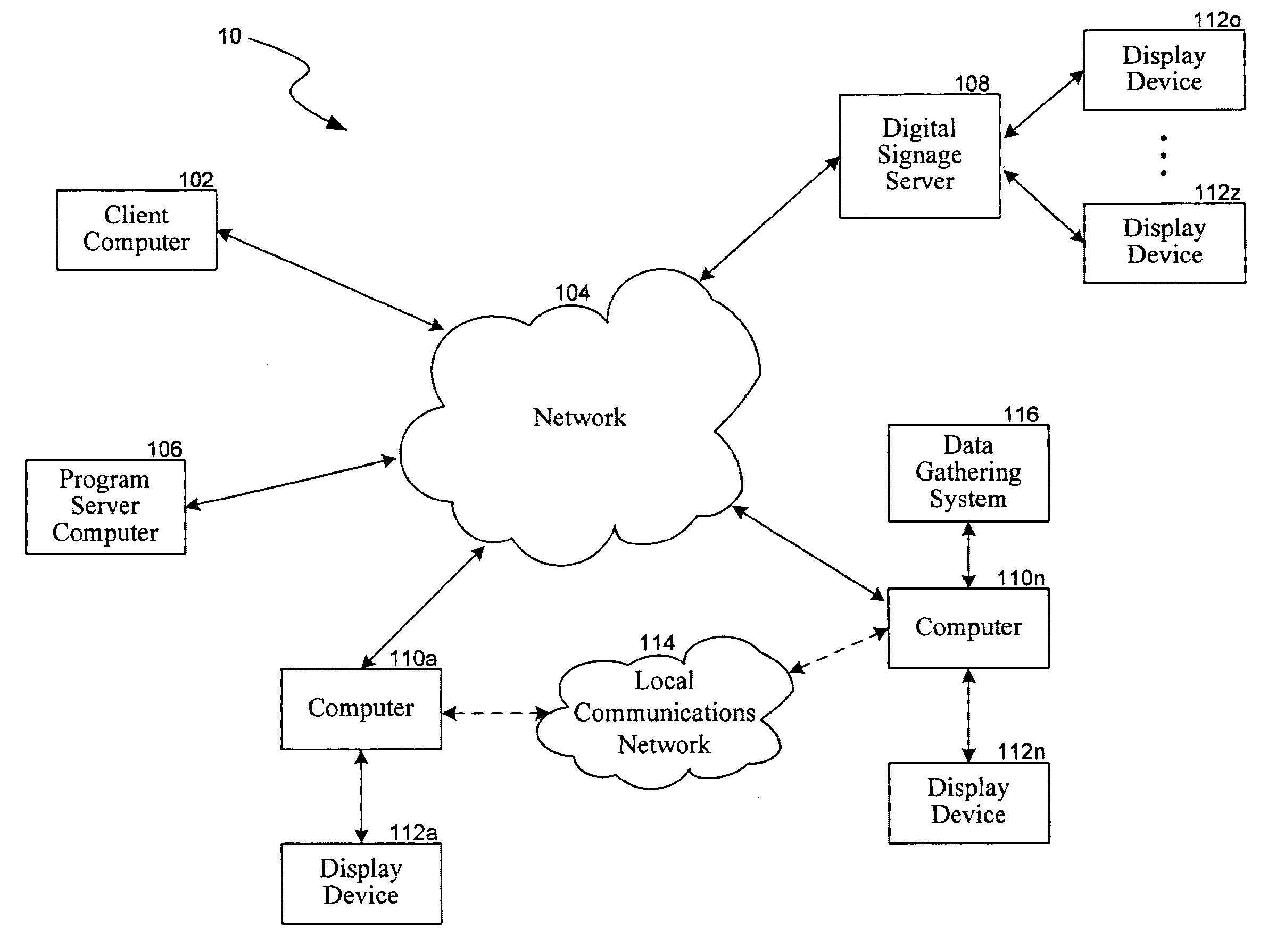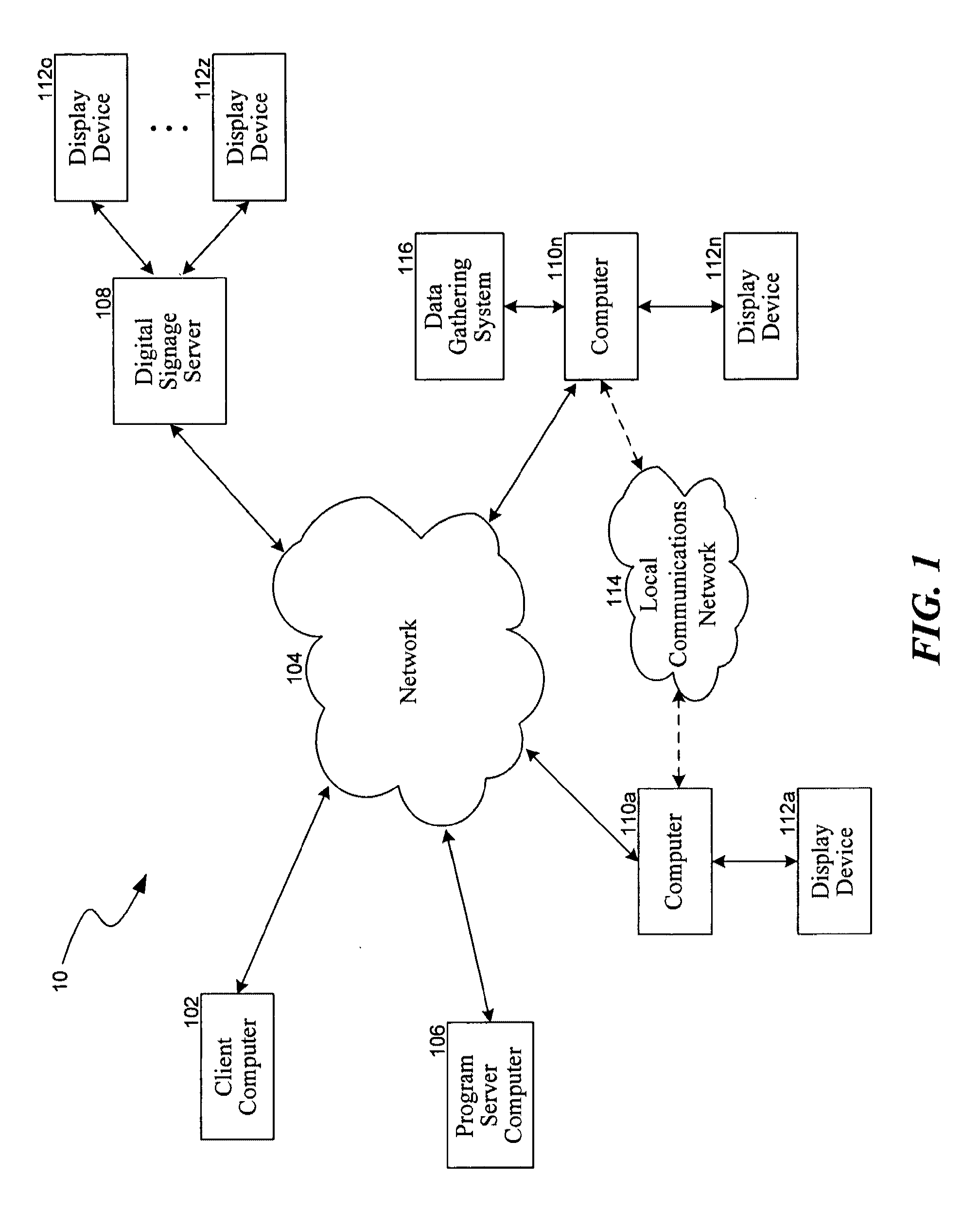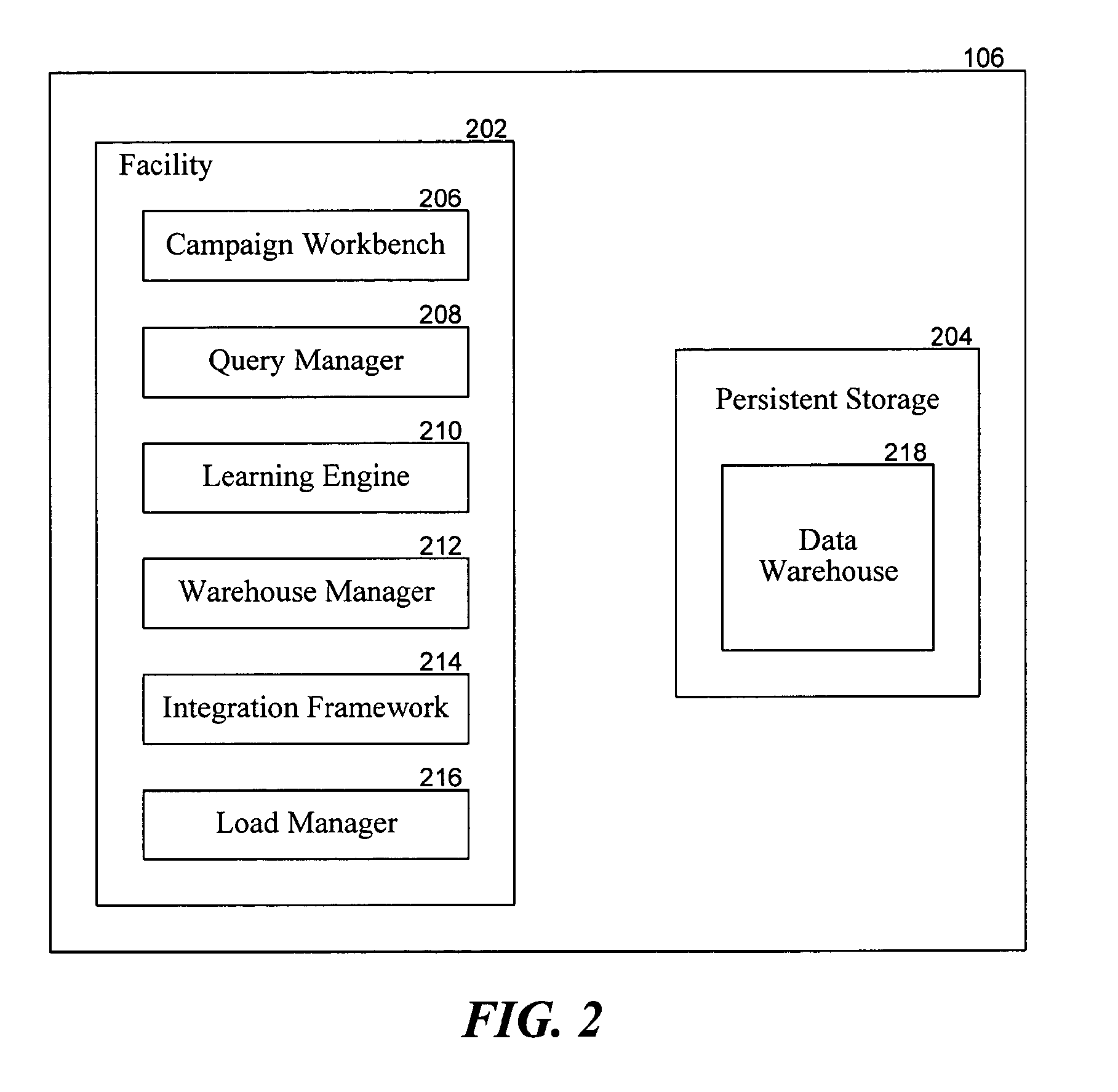System and method for delivering and optimizing media programming in public spaces with interactive digital signage networks through mobile device access
a digital signage and public space technology, applied in the field of public space media programming delivery, can solve the problems of difficult to know by marketers, complicated and expensive, and high production cos
- Summary
- Abstract
- Description
- Claims
- Application Information
AI Technical Summary
Benefits of technology
Problems solved by technology
Method used
Image
Examples
Embodiment Construction
[0022]An analytically-driven technology system and corresponding methods for automating the execution, measurement, and optimization of in-store promotional digital media campaigns are provided. In various embodiments of the invention, the analytically-driven technology system and corresponding methods incorporate user or marketer data, customer or viewer behavioral response data, and digital signage or content data to optimize a media campaign to achieve the goals of the user of the system.
[0023]In one embodiment, a software facility (“facility”) provides an integrated behavioral analytics for digital signage, which provides users, such as marketers, content creators, signage network operators, etc., the ability to gauge the response, e.g., sales increases, to their digital signage. For example, the facility retrieves viewer behavioral data (e.g., sales data, store foot traffic data, etc.) and data regarding the content actually played on the digital signage (e.g., play logs), and ...
PUM
 Login to View More
Login to View More Abstract
Description
Claims
Application Information
 Login to View More
Login to View More - R&D
- Intellectual Property
- Life Sciences
- Materials
- Tech Scout
- Unparalleled Data Quality
- Higher Quality Content
- 60% Fewer Hallucinations
Browse by: Latest US Patents, China's latest patents, Technical Efficacy Thesaurus, Application Domain, Technology Topic, Popular Technical Reports.
© 2025 PatSnap. All rights reserved.Legal|Privacy policy|Modern Slavery Act Transparency Statement|Sitemap|About US| Contact US: help@patsnap.com



